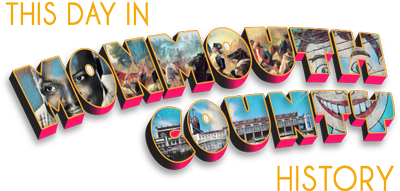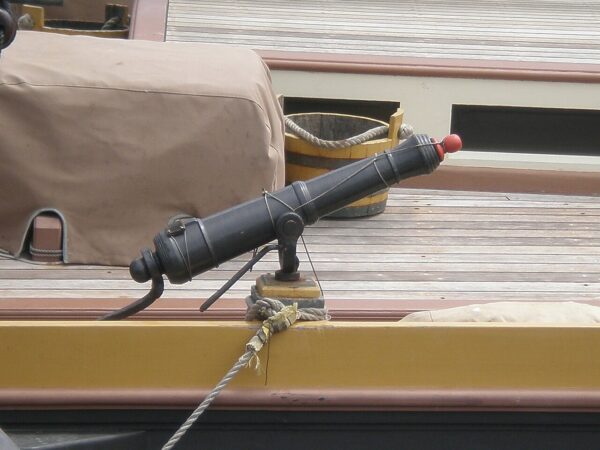On August 5, 1780, Joshua Huddy received a privateer’s commission. Though best known for his exploits on land, Huddy also supported the revolutionary cause on water, attacking and seizing British ships both to hamper enemy operations and to earn the great sums of prize money awarded in exchange for the seized property. In his privateer’s commission, the Continental Congress authorized Huddy to “set forth…in a war-like manner” against the British in “the Armed boat called Black Snake.”
Weighing in at a mere ten tons, with a single swivel gun (see picture) and 14-man crew, Huddy’s Black Snake was far below average size for an American privateering vessel, some of which could be as heavy as 500 tons, carry as many as 20 guns, and employ crews of 100 or more. How much success Huddy had with his “armed boat” is unknown; admiralty court records from the period, which would indicate his earnings, no longer exist. But his willingness to go up against the world’s greatest naval power with a single swivel gun speaks to his Patriot passion – or perhaps his foolhardy character.
There were other privateer vessels during the Revolution named Black Snake that operated in Long Island Sound and off Rhode Island.
Privateers were critical to the success of the colonial independence effort. Lacking a central government, the Colonies had no real navy at the start of hostilities while the British Royal Navy was still among if not the mightiest in the world. Over the course of the war, Patriot war vessels actually diminished in number and force, from 31 vessels in 1775 to seven in 1782, and from 586 guns to 198 over that time. Lacking the logistical requirements to quickly construct vessels that could contend with British warships, George Washington and others urged the Continental Congress to issue “Letters of Marque and Reprisal” that would license private citizens to capture any British vessel and its contents and receive a share of its value. These were called “privateers.” And while naval forces were dwindling, the number of Patriot privateers increased during the war, from 136 vessels in 1775 to 228 in 1782, and from 1,360 guns to 3,420. This significant growth in a Patriot fighting naval force made life difficult for the British occupying New York and Philadelphia, who were largely dependent on supplies from England, and it was those supply ships that privateers largely targeted. It was not unheard of, but privateers such as Adam Hyler attacking British warships was much less common.
Sources:
Arnold, James N. (1891). Vital Records of Rhode Island, 1636-1850. Historical Pub. Co., Providence, R.I. The Library of Congress, Washington, D.C.
Dolin, Eric Jay. (2022). Rebels at Sea: Privateering in the American Revolution. Liveright Publishing Corporation, A Division of W.W. Norton & Company, New York, N.Y.
Maclay, Edgar Stanton. (1899). A History of American Privateers. D. Appleton and Company, New York, NY.
Saretzky, Gary D. (2004). The Joshua Huddy Era: Documents of the American Revolution. Catalog of the Exhibition at Monmouth County Library Headquarters, Manalapan, N.J, October, 2004; Revised November 2004. Produced by the Monmouth County Archives. Available: http://visitmonmouth.com/archives.
Shomette, Donald Grady. (2016). Privateers of the Revolution. Shiffer Publishing, Ltd., Atglen, Penn.


Leave a Reply